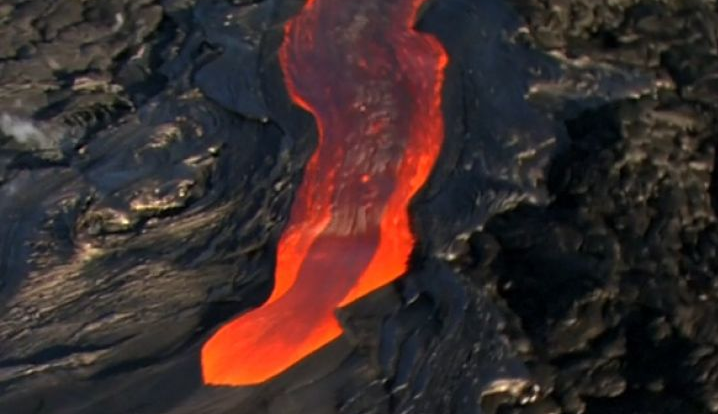Scientists say the Moon and Mars may have lava tubes so large, they could be used as permanent base structures for colonization

(Natural News) A study published in the journal Earth-Science Reviews found that lava tubes larger than those on Earth might be lurking beneath the surfaces of the Moon and Mars.
According to researchers from the University of Padua, University of Bologna and Virtual Geographic Agency in Italy, the tubes are large enough that they could fit bases for astronauts. They also noted that the lava tubes in the Moon are particularly sturdy due to its lower gravity.
“What is most important is that, despite the impressive dimension of the lunar tubes, they remain well within the roof stability threshold because of a lower gravitational attraction,” said co-author Matteo Massironi.
Stable environments in extraterrestrial lava tubes
Lava tubes are subsurface tunnels or cavities through which lava travels beneath the surface of a lava flow. They form when lava channels crust over or when the surface of lava flows solidify, leaving pockets of still molten lava that continue to flow. Eventually, lava will melt the walls of these pockets to form a lava tube.
There are many lava tubes on Earth such as in Hawaii and the Canary Islands. But research previously found that they also likely exist in Mars and the Moon.
In the study, researchers examined the size, depth, eccentricity and several other morphometric parameters of the tubes in the two planetary bodies. Findings from previous research on Earth’s lava tubes are then used to come up with terrain models.
The team found that lunar and Martian tubes can respectively be as much as 1,000 and 100 times wider than those on Earth, which typically have a diameter of around 98 feet. In particular, lava tubes on the Moon can be longer than 25 miles, which makes them ideal for subsurface exploration and even potential settlement.
The researchers explained that the lunar tubes are not only wide but also have a protected and stable environment due to lower gravitational pull, which means many of the lava tubes are intact. They added such an environment can provide shields from cosmic and solar radiation as well as micrometeorite impacts that often occur on planetary bodies. Temperatures also do not vary much from daytime to nighttime in the tubes. For comparison, surface temperatures near the lunar equator were previously found to reach 120 degrees Celsius in the daytime and plunge to negative 130 degrees during the two-week-long night.
Although researchers observed collapsed lava tubes, they posited that asteroids impacts were likely to blame.
“The collapse chains we observed might have been caused by asteroids piercing the tube walls. This is what the collapse chains in Marius Hills seem to suggest,” said Massironi.
The Moon has no active volcanoes, and recent research found that the potential magma underneath the Moon’s surface is too dense and heavy. (Related: Will human colonies be on the Moon in five years?.)
Martian lava tubes could have potentially hosted life
Experts also believe that lava tubes could have once hosted life. On Mars, where evidence shows that the climate conditions may have been warmer and wetter, scientists believe that the subsurface is the best place to host life if it exists or previously existed on the red planet.
They explained that the Martian surface would be too cold and dry while cosmic and solar rays would be too strong due to the planet’s poor magnetic field. Furthermore, static electricity in the planet’s dust storms can create reactive chemicals called perchlorates that are toxic to any known life form.
Lava tubes, on the other hand, provide a stable environment for life to thrive, supporting the conclusions of the abovementioned study. And even if the environment in the tubes is still inhospitable, they said that they could have been life’s last holdout.
“If life exists there, or existed there in the past, it probably will be best maintained in the subsurface, away from harsh surface conditions and processes,” said astrobiologist Charity Phillips-Lander of the Southwest Research Institute in Texas.
Space.news has more on the search for alien life.
Sources include:

